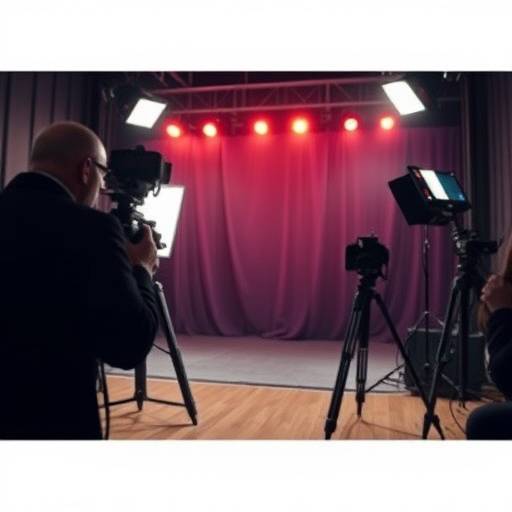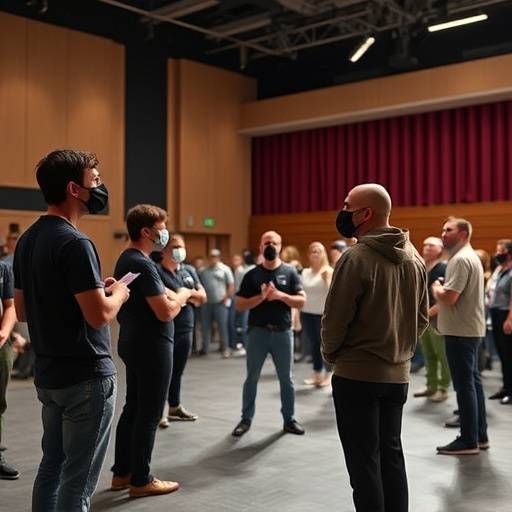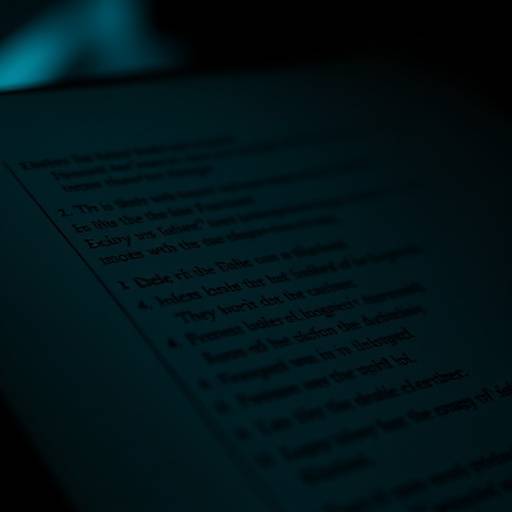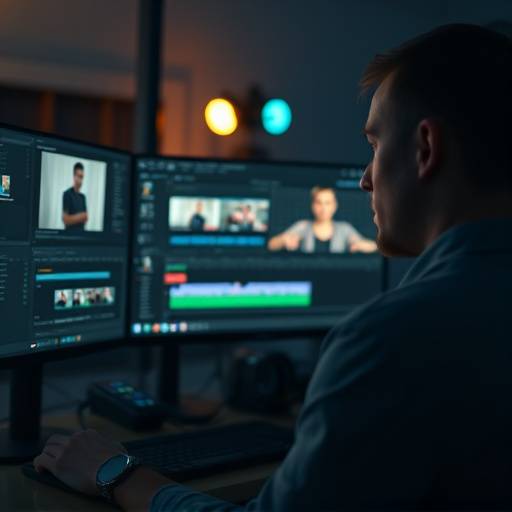
The Art of Visual Storytelling: Directing with the Camera
Visual storytelling is the cornerstone of filmmaking. Learn how to use camera angles, movement, and composition to convey emotion and drive the narrative. Discover techniques used by renowned directors like Alfred Hitchcock and Christopher Nolan to create iconic scenes. Explore the importance of mise-en-scène and how it contributes to the overall visual impact of your film. We delve into specific examples from classic and contemporary films, analyzing how different visual techniques were employed to enhance storytelling. From the use of long takes to create suspense to the deliberate placement of objects within the frame to symbolize deeper meanings, this article provides practical insights for aspiring directors looking to master the art of visual storytelling. Understand the power of the camera as a tool for expression and learn how to wield it effectively to bring your cinematic vision to life.
Read More

Working with Actors: Building Trust and Achieving Authentic Performances
Directing actors is a delicate dance of communication, empathy, and leadership. Learn how to establish a strong rapport with your cast, provide effective direction, and elicit compelling performances. Understand different acting techniques and how to adapt your approach to suit individual actors' needs. This article explores the importance of creating a safe and collaborative environment on set, where actors feel comfortable taking risks and exploring their characters. We discuss practical strategies for conducting rehearsals, providing constructive feedback, and resolving conflicts. Learn how to effectively communicate your vision to actors, ensuring they understand the motivations and emotions behind their characters. Through real-world examples and case studies, this article provides valuable insights for directors seeking to unlock the full potential of their actors and achieve truly authentic performances.
Read More

Screenwriting Secrets: Crafting Compelling Characters and Engaging Plots
A strong script is the foundation of any great film. Discover the essential elements of screenwriting, including character development, plot structure, dialogue, and theme. Learn how to create believable characters that audiences connect with, craft engaging plots that keep viewers on the edge of their seats, and write dialogue that sounds natural and authentic. This article provides a comprehensive guide to the screenwriting process, from brainstorming ideas to outlining the story to writing the first draft. We explore different screenwriting techniques, such as the three-act structure, the hero's journey, and the save the cat method. Learn how to effectively use subtext, foreshadowing, and symbolism to add depth and complexity to your screenplay. Whether you're a seasoned screenwriter or just starting out, this article offers valuable insights and practical tips for crafting compelling characters and engaging plots that will captivate audiences.
Read More

The Power of Lighting: Creating Mood and Atmosphere in Cinematography
Lighting is an essential tool for creating mood and atmosphere in filmmaking. Learn about different lighting techniques, including three-point lighting, natural lighting, and motivated lighting. Understand how to use light and shadow to shape the image, guide the viewer's eye, and evoke specific emotions. This article explores the different types of lighting equipment, such as softboxes, reflectors, and gels, and how to use them effectively. We discuss the importance of color temperature and how it affects the overall look of your film. Learn how to use lighting to create a sense of depth, highlight textures, and enhance the beauty of your subjects. Through real-world examples and case studies, this article provides valuable insights for cinematographers and directors looking to master the art of lighting and create visually stunning films.
Read More

Mastering the Edit: Techniques for Rhythm, Pacing, and Emotional Impact
Editing is the final stage of filmmaking, where the raw footage is transformed into a cohesive and compelling story. Learn about different editing techniques, including montage, cross-cutting, and parallel editing. Understand how to use rhythm, pacing, and shot selection to create emotional impact and guide the viewer's experience. This article explores the different types of editing software, such as Adobe Premiere Pro and Final Cut Pro, and how to use them effectively. We discuss the importance of sound design and music in creating a powerful and immersive cinematic experience. Learn how to use transitions, effects, and color correction to enhance the visual quality of your film. Whether you're an experienced editor or just starting out, this article offers valuable insights and practical tips for mastering the art of editing and creating films that resonate with audiences.
Read More